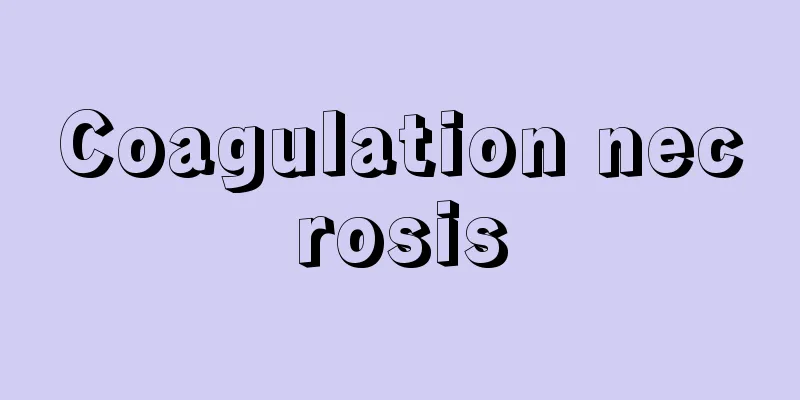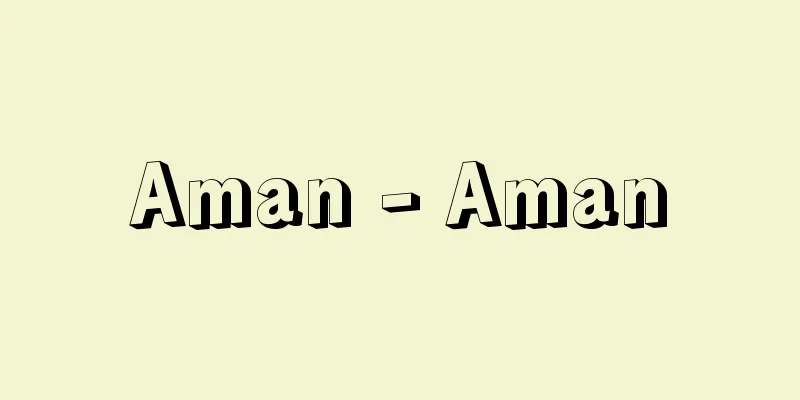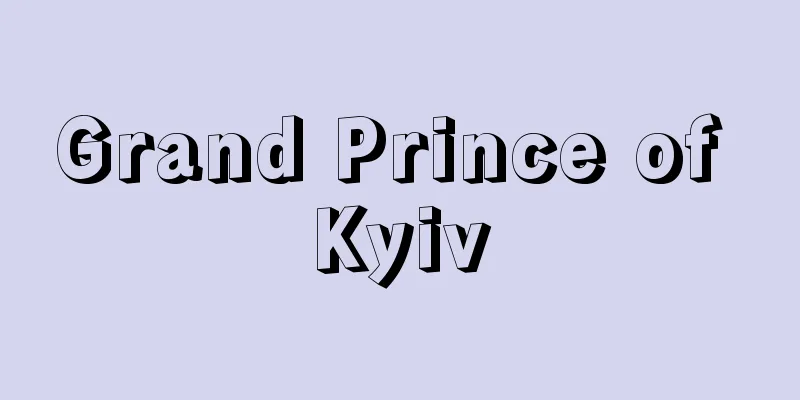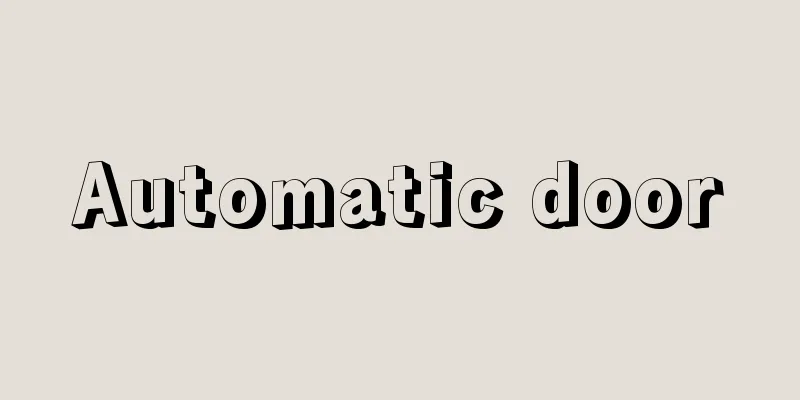Prison - keimusho
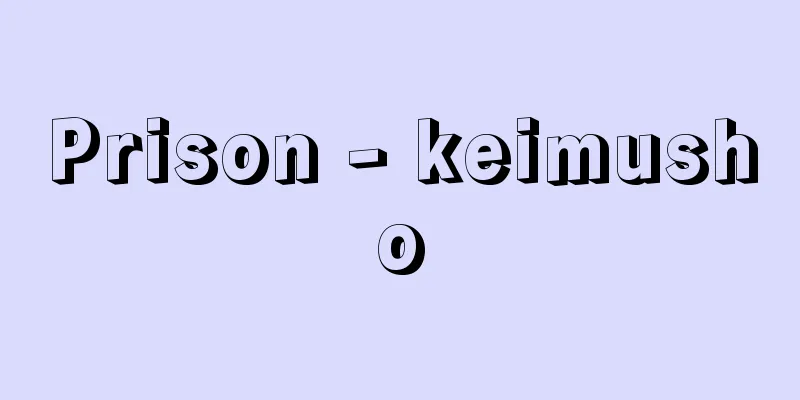
|
A penal institution that houses those who have been sentenced to a sentence of imprisonment. Under the Penal Detention Facility Law, facilities that house and treat those serving sentences of imprisonment, incarceration, and detention, as well as facilities that house and treat those under detention or on death row, are broadly referred to as "penal institutions" (Article 3 of the same law). On the other hand, the Ministry of Justice Establishment Law distinguishes between prisons, juvenile prisons, and detention houses as penal institutions, and stipulates that the Ministry of Justice establishes and supervises these (Article 8 of the Ministry of Justice Establishment Law). Of these, prisons and juvenile prisons are penal institutions that mainly house and treat those serving sentences of imprisonment, and in the broad sense, both are collectively called prisons. In contrast, detention houses are penal institutions that mainly house those under detention or on death row. The names and locations of prisons, juvenile prisons, and detention houses are determined by the "Prison, Juvenile Prison, and Detention House Organization Regulations (Ministry of Justice Ordinance No. 3 of 2001)." Incidentally, from around 1993, Japan's penal institutions began to suffer from an "overcrowding" situation (this trend has since eased, but some penal institutions are still overcrowded). In order to alleviate this overcrowding situation, prisons were built using the so-called PFI (Private Finance Initiative) method (a method of construction and operation using private funds), and these prisons are called "social rehabilitation promotion centers." As of 2010, there were four such facilities. [Shuichi Susuki] HistoryThe idea that prisons are places to detain people, not to punish them, has existed since Roman times, throughout the ancient and medieval periods, and into the early modern period. This is because the main punishments at the time were capital punishment and corporal punishment, and prisons were simply used as places to detain criminals until they were punished. Roman mining labor, which was similar in form to imprisonment, and fortress punishment, which was seen from the Middle Ages to the early modern period for building fortresses, were corporal punishments that involved imprisonment, punishments that used the criminal's labor and inflicted physical pain on him, and life imprisonment, as seen in the Carolina Penal Code of 1532 (the unified Great Penal Code during the period of the adoption of Roman law in Germany), was one method of execution of the death penalty. Thus, before imprisonment, which included imprisonment itself as a punishment, was established (especially until the mid-16th century), criminals were often confined in castle towers or underground caves, often in unsanitary conditions and forced to starve. This also meant that prisons were used to intimidate criminals to prevent them from committing crimes, and as a form of torture to extract confessions. Imprisonment for life only began to emerge in modern times, and even in those cases, it was not in traditional prisons, but in temples and other facilities, where criminals were forced to work in order to be disciplined and educated in work. Imprisonment for life was born when this form was combined with imprisonment in a prison. However, due to the rejection of the death penalty by the Enlightenment, the hesitation to use cruel corporal punishment, and the fact that imprisonment for life came about in the process of searching for other punishment methods, prison conditions were left as they were, and remain, miserable. In 1777, the Englishman John Howard published his groundbreaking book on prisons, Prison Conditions in England and Wales, in which he appealed to the world that prisons at the time were unsanitary, like breeding grounds for infectious diseases, and disorderly, like schools for criminals. This marked the beginning of the so-called prison reform movement, which advocated the adoption of solitary confinement with prison work. This movement spread to America, and blossomed through the Philadelphia Prison Society (established in 1776 as the Pennsylvania Prison Society). In Japan, during the Edo period, there was a system of labor camps called "Yoseba," which was comparable to the Amsterdam Penitentiary of the late 16th century, and there were progressive ideas about criminal administration, but in the early Meiji period, modern systems of imprisonment and prison systems were introduced, learning from those of then British colonies such as Hong Kong and Singapore. Until the middle of the Meiji period, when prisons came under the jurisdiction of the Ministry of Home Affairs, there was a distinction between prefectural prisons, which were paid for by each prefecture, and penal colonies, which were directly under the Ministry of Home Affairs and paid for by the national treasury, but when they were transferred to the Ministry of Justice in 1903 (Meiji 36), all prisons became paid for by the national treasury in order to unify and streamline the prison system. Currently, penal institutions are under the jurisdiction of the Ministry of Justice, and staff at penal institutions are national civil servants. [Shuichi Susuki and Masaoki Ishikawa] "New Prison Studies" by Masaki Ryo (1951, Yuhikaku)" ▽ "Lectures on Prison Law" by Ogawa Shigejiro (1967, Horitsu Kenkyusha)" ▽ "Revised Prison Law" by Ono Seiichiro and Asakura Kyoichi (1972, Yuhikaku)" ▽ "Modern Perspectives on Penal Administration" edited by Otsuka Hitoshi and Hiramatsu Yoshiro (1981, Yuhikaku) ▽ "The Future of Prison Reform - On the Revision of the Prison Law" edited by the Criminal Legislation Study Group (2005, Gendaijinbunsha, Daigaku Tosho Publishing)" ▽ "The Prison Landscape - Prison Monographs Gazing at Society" edited by Hamai Koichi (2006, Nippon Hyoronsha) ▽ "Prison Reform - Guidelines for Reconstructing the Prison System" edited by Kikuta Koichi and Kaito Yuichi (2007, Nippon Hyoronsha)" ▽ "The Future of Prison Privatization - Japan's Version of PFI Prisons," edited by the Criminal Legislation Research Group (2008, Gendaijinbunsha, Daigaku Tosho Publishing)" ▽ "New Introduction to Criminal Law, edited by Kamoshita Moritaka, 2nd revised edition (2009, Tokyo Horei Publishing)" ▽ "Reader on Prisoner Treatment - Prison Life Revealed," by Kamoshita Moritaka (2010, Shogakukan Shueisha Productions)" ▽ "Japanese Prisons, by Kikuta Koichi (Iwanami Shinsho)" [Reference] | | | |Source: Shogakukan Encyclopedia Nipponica About Encyclopedia Nipponica Information | Legend |
|
自由刑に処せられた者を収容する刑事施設。刑事収容施設法では、懲役・禁錮(きんこ)・拘留といった自由刑受刑者を収容し、処遇を行う施設や被勾留(こうりゅう)者や死刑確定者を収容し、処遇する施設等は広く「刑事施設」という名でよばれる(同法3条)。一方、法務省設置法は刑事施設として刑務所、少年刑務所および拘置所を区別し、法務省がこれらを設置・所管するものとされる(法務省設置法8条)。このうち刑務所と少年刑務所は、主として自由刑受刑者を収容し、処遇する刑事施設であり、広義では両者をあわせて刑務所とよぶ。これに対し、拘置所は、主として被勾留者や死刑確定者を収容する刑事施設である。刑務所・少年刑務所・拘置所の名称および位置は、「刑務所、少年刑務所及び拘置所組織規則(平成13年法務省令第3号)」により定められる。なお、1993年(平成5)ころより日本の刑事施設は「過剰収容」の状態が現出した(その後この傾向は緩和されたものの、一部の刑事施設ではなお過剰収容になっているところもある)。この過剰収容状態を緩和するために、いわゆるPFI(Private Finance Initiative)方式(民間資金を活用して建設・運営される方式)の刑務所建設が行われたが、これらの刑務所は「社会復帰促進センター」という名を冠してよばれる。2010年の時点で4施設を数える。 [須々木主一] 沿革監獄は人を拘禁するところであって、人を処罰するところではないという思想は、ローマ時代からみられ、古代・中世を通じて近代初頭に至るまで存在した。それは、当時の主たる刑罰は死刑と身体刑であって、監獄はただ犯罪者を処罰するまでのあいだ拘禁する場所として使用されたことによる。自由刑に形式が近似するローマ時代の鉱山労働や、中世から近世にかけてみられる城塞(じょうさい)構築のための城塞刑などは、拘禁を伴う身体刑、犯罪人の労働力を利用しつつ肉体的な苦痛を与えるための刑であり、1532年のカロリナ刑法典(ドイツにおけるローマ法継受時代の統一的大刑事法典)にみられる終身禁錮は、死刑執行の一方法であった。このように、拘禁自体を刑罰内容とする自由刑が確立する以前は(とりわけ16世紀の中ごろまでは)、犯罪人を城塔や地下の洞穴に監禁することが多く、しばしば不衛生で、飢餓を強いられる状態がみられた。そのことは、また監獄が、犯罪人を威嚇して犯罪の予防を図ったり、拷問の一種として自白を強要したりするための手段に利用されたことを意味する。 自由刑が芽生えたのは近代に入ってからのことで、その場合にも、当初は従来の監獄においてではなく、寺院その他の別の施設で犯罪者の強制労働による規律と労働への教育が図られたものであった。この形式が監獄拘禁と結び付くことによって自由刑が誕生する。しかし、そこには、啓蒙(けいもう)思想による死刑の排撃、残虐な身体刑に対する躊躇(ちゅうちょ)、そして他の刑罰方法を模索する過程で自由刑に行き着いたという事情もあって、監獄の状況は依然として悲惨なままに放置された。イギリスのジョン・ハワードは1777年に監獄についての画期的な著作『イングランドおよびウェールズにおける監獄事情』を公にし、当時のそれが不衛生なること伝染病の温床のごとく、無秩序なること犯罪学校のごとくであることを世に訴え、ここに、監獄作業を伴う独居拘禁を採用すべしとするいわゆる刑務所改良運動が始まる。この運動はアメリカに渡り、フィラデルフィア監獄協会(1776年ペンシルベニア監獄協会として発足)を通して開花結実した。 日本では、16世紀末のアムステルダム懲治場と並び称される人足寄場(よせば)の制度が江戸時代にあり、刑政思想に進歩的なものがあったが、近代的な自由刑制度と獄制は、明治初期、香港(ホンコン)、シンガポールなど、当時のイギリス植民地のそれらに学んで導入された。監獄が内務省の所管とされた明治の中ごろまでは、各府県費の支弁にかかる府県監獄と、国庫支弁にかかる内務省直轄の集治監とが区別されていたが、1903年(明治36)の司法省移管と同時に獄制の統一・整備のため監獄はすべて国庫支弁となった。現在は法務省の所管で刑事施設の職員は国家公務員である。 [須々木主一・石川正興] 『正木亮著『新監獄学』(1951・有斐閣)』▽『小河滋次郎著『監獄法講義』(1967・法律研究社)』▽『小野清一郎・朝倉京一著『改訂監獄法』(1972・有斐閣)』▽『大塚仁・平松義郎編『行刑の現代的視点』(1981・有斐閣)』▽『刑事立法研究会編『刑務所改革のゆくえ――監獄法改正をめぐって』(2005・現代人文社、大学図書発売)』▽『浜井浩一編著『刑務所の風景――社会を見つめる刑務所モノグラフ』(2006・日本評論社)』▽『菊田幸一・海渡雄一編『刑務所改革――刑務所システム再構築への指針』(2007・日本評論社)』▽『刑事立法研究会編『刑務所民営化のゆくえ――日本版PFI刑務所をめぐって』(2008・現代人文社、大学図書発売)』▽『鴨下守孝編著『新行刑法要論』全訂2版(2009・東京法令出版)』▽『鴨下守孝著『受刑者処遇読本――明らかにされる刑務所生活』(2010・小学館集英社プロダクション)』▽『菊田幸一著『日本の刑務所』(岩波新書)』 [参照項目] | | | |出典 小学館 日本大百科全書(ニッポニカ)日本大百科全書(ニッポニカ)について 情報 | 凡例 |
Recommend
Yoshitada - Giin
⇒ Kangan Yoshitada Source: Kodansha Digital Japane...
Tsuga [town] - Tsuga
An old town in Shimotsuga District, southern Tochi...
Display - Display (English spelling)
In the communication between animals, a behaviora...
Rhinoceros sondaicus (English spelling) Rhinoceros sondaicus
…[Yoshiharu Imaizumi]. … *Some of the terminology...
Stipa pekinense; feather grass
A perennial grass of the Gramineae family, distrib...
Mustafa Kemal Atatürk
1881‐1938 Leader of the Turkish homeland liberatio...
English Review
…He collaborated with J. Conrad on works such as ...
Loan - Shakkan (English spelling) Loan
Generally refers to the borrowing and lending of ...
Kiho School - Kiho School
…A disciple of Song Ik-pil and Yi Yul-gok, he is ...
Adam de Saint-Victor
...The cathedral of Metz was the leading center o...
Election observer - Election observer
...In an election, the ballot counting officer op...
Foreign school - Gaikokujingakko
This refers to a school whose purpose is to educa...
Kudzu net (Katsura net) - Katsuraami
Also called kudzu yose nets, they were mainly used...
Wakadokoro - Wakadokoro
A temporary post set up in the Imperial Court to ...
Ishiwaki
…Southwestern Akita Prefecture, a plain downstrea...



